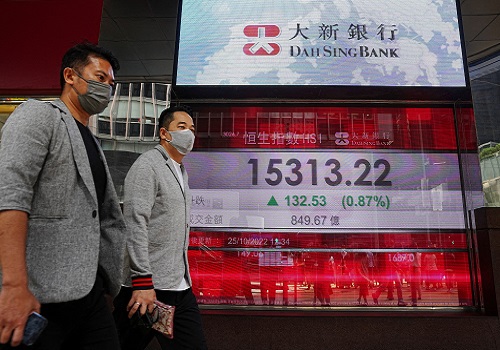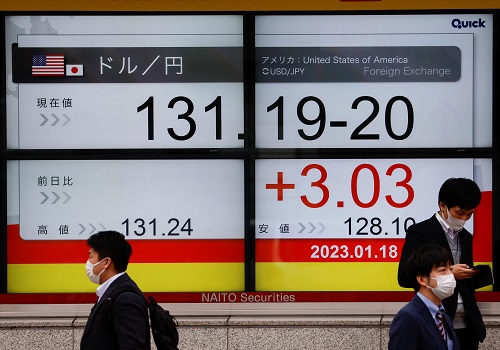Chip stocks hammered in Asia, dollar firms on hawkish Fed

Follow us Now on Telegram ! Get daily 10 - 12 important updates on Business, Finance and Investment. Join our Telegram Channel
Chip stocks took a beating on Thursday, sending most Asian share indexes lower, after grim signals from Micron Technology overnight about excess inventories and sluggish demand.
Meanwhile, the U.S. dollar rebounded after stronger-than-expected U.S. retail sales suggested the Federal Reserve was unlikely to ease up in its battle with inflation.
That fuelled concerns about the economic outlook, with the U.S. Treasury yield curve remaining deeply inverted in Tokyo trading and suggesting that investors are braced for recession.
"Inflation is likely to remain elevated for some time ... because in the U.S., at least, it's services that are driving inflation, and that can have greater persistency," Salim Ramji, global head of ETFs and index investments at BlackRock, told the Reuters Global Markets Forum on Wednesday.
"(In equities) minimum volatility strategies can help investors stay invested while reducing risk," he said.
Hong Kong's Hang Seng Index tumbled 2.1%, with its tech stocks slipping more than 4%. Mainland Chinese shares also declined, with blue chips falling 1.1%.
Japan's Nikkei lost 0.3% and South Korea's Kospi dropped 1.1%, each led by declines in heavyweight chip players.
Overnight, the Philadelphia SE Semiconductor Index slumped 4.3% after Micron said it would reduce memory chip supply and make more cuts to its capital spending plan.
The tech-heavy Nasdaq slumped 1.5% while the S&P 500 slid 0.8%.
However, e-mini futures indicated some respite at the reopen, pointing 0.26$ higher for the Nasdaq and 0.18% higher for the S&P.
For Europe, German DAX futures signaled a 0.08% rise at the start, but U.K. FTSE futures pointed down 0.25%.
Investors are re-assessing the U.S. monetary policy outlook after consumer spending figures contradicted the narrative of the past week or so from cooler consumer and producer price data.
Rhetoric from Fed officials on Wednesday also remained hawkish. Fed Governor Christopher Waller said there was still a ways to go on rates, while San Francisco Fed President Mary Daly told CNBC that pausing rate hikes was not yet part of the discussion.
"Fed commentary, like the resilient spending numbers, gave little succour for anyone looking for an imminent pivot," with caution permeating markets as a result, Ted Nugent, an economist at National Australia Bank, wrote in a client note.
Money markets give 93% odds that the Fed will slow to a half-point rate increase on Dec. 14, with just 7% probability of another 75 basis point increase. However, traders still see the terminal rate close to 5% by next summer, up from the current policy rate of 3.75-4%.
The U.S. dollar index - which measures the currency against six major counterparts - added 0.13% to 106.41, stabilizing after a slide as low as 105.30 on Tuesday following the release of producer price inflation numbers.
The euro sank 0.14%, while the risk-sensitive Aussie dollar slipped 0.4%.
U.S. 10-year Treasury yields recovered modestly from a six-week low at 3.671% hit overnight in Tokyo trading, last standing at about 3.71%, while the two-year yield continued to consolidate near its lowest level since Oct. 28 around 4.37%.
Gold slid 0.6% to about $1,763 an ounce amid a firmer dollar.
Crude oil continued to decline in Asia after settling more than a dollar lower overnight, following the resumption of Russian oil shipments via the Druzhba pipeline to Hungary and as rising COVID-19 cases in China weighed on sentiment. [O/R]
Brent crude futures dropped by $1.07, or 1.2%, to $91.79 a barrel, while U.S. West Texas Intermediate (WTI) crude futures fell $1.21, or 1.4%, to $84.38 a barrel.












 320-x-100_uti_gold.jpg" alt="Advertisement">
320-x-100_uti_gold.jpg" alt="Advertisement">












